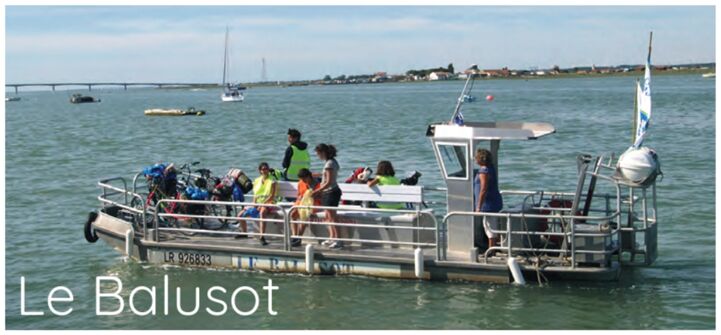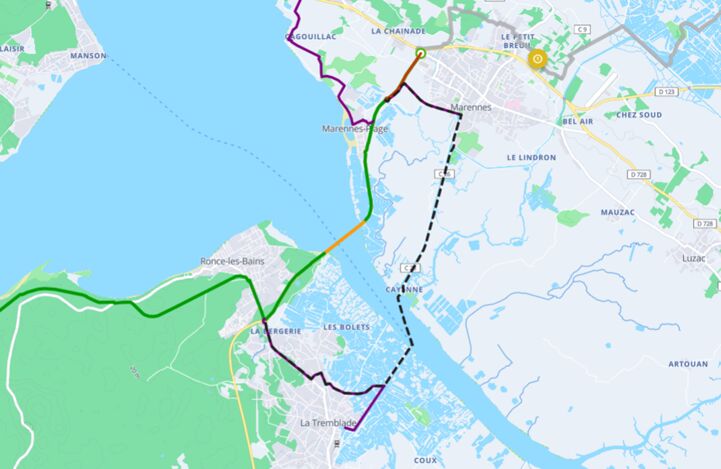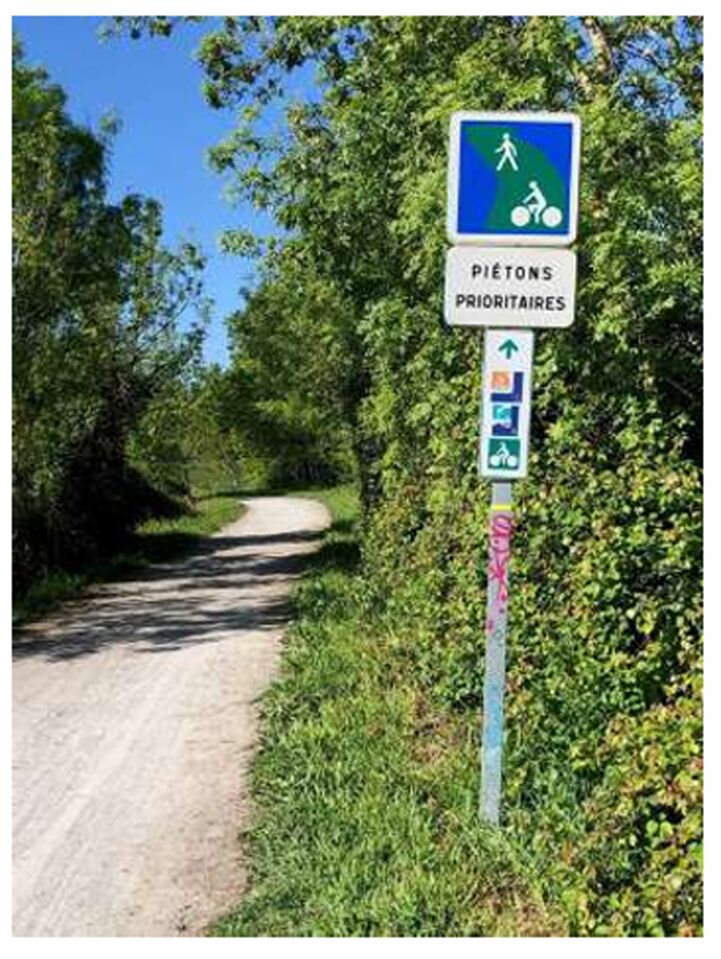Working on quality to obtain the EuroVelo Certification: Lessons from La Vélodyssée
Over the last five years, the consortium of partners developing the French segment of EuroVelo 1 – Atlantic Coast Route has done tremendous work resulting in the EuroVelo Certification of the route stretch, announced just last month.
La Vélodyssée (aka EuroVelo 1 – Atlantic Coast Route in France) is a 1,300 km fully signposted cycle route, over 76% of which is traffic-free. It runs between Roscoff in Brittany and Hendaye in the Basque Country, never going far from the ocean. But it was no small task to realise this high-quality and attractive route! La Vélodyssée was launched back in 2012 and participated in the Interreg Atlantic Area AtlanticOnBike project from 2017 to 2020, and its extension from 2021 to 2023, which allowed the collective to carry out a first quality assessment with the European Certification Standard (ECS) methodology and to put in place a strong governance.
The three good practices that we present below result from this work, as they were part of a commitment to resolve the non-conformities identified along the route.
A boat alternative to avoid the dangerous Seudre Bridge
The crossing of the Seudre Bridge between Marennes and Ronce-les-Bains in Charente-Maritime was identified as a problematic spot along the cycle route, due to high traffic levels and the narrow width of the bridge. It was a complex issue to solve, as the bridge structure cannot be widened. But the strong commitment of the Charente Maritime department to cycling infrastructure allowed to address the issue by organising discussions and exploring various scenarios, and eventually identify a solution that would improve cycling conditions.
As it was not possible to modify the bridge structure itself, the focus shifted towards signing an alternative route, considering the geographical constraints of crossing the Seudre estuary. Since 2023, a new alternative route can be followed between June and September, using the ferry between Port de La Tremblade and Port de La Cayenne which runs between 9h and 19h. This fully signposted route is highlighted on the map of the section on La Vélodyssée's website. A dedicated page was also created to communicate the alternative solution more clearly and widely.


Refurbishment works in Nantes
In Nantes, where EuroVelo 1 – Atlantic Coast Route meets EuroVelo 6 – Atlantic-Black Sea, the “Three Continents Bridge” was identified as a black spot due to high traffic volumes. Very high traffic volumes were also reported on the road leading cyclists out of the city, making it very unsafe.
These issues were solved thanks to refurbishment works carried out by Nantes Metropolis. In August 2020, a cycle path was built on the “Three Continents Bridge”. A true work of art, as Nantes Metropolis asked artists to paint it in bright colours!


In 2021, important works led to the realisation of a new safe itinerary for cyclists on more than 3 km along “Route de Pornic”. The implementation of this new infrastructure also allowed to solve signing issues that had been reported on the former road.
Improvement of route signage and surfaces in Gironde
In the Gironde department, most issues concerned the route signposting. But since 2019, the Gironde Department has faced several major fire episodes, the most serious being the fires of summer 2022, which significantly impacted existing cycling infrastructure and needed new prioritisations – strategic, financial, and operational.
The collective of La Vélodyssée succeeded in gathering various stakeholders from the Gironde department into its governance, including inter-municipalities. This was a real asset, particularly for the coordination of infrastructure works. Given the diverse distribution of competencies across different territories, it was possible to identify project owners with the necessary skills to officially address route surfacing or signage issues. La Vélodyssée coordination worked closely with the Gironde stakeholders to assess the needs for improvements following the fires.
As of today, all signage has been revised throughout the territory and a new implementation plan is being defined. All stakeholders are committed to provide the best possible cycling experience on EuroVelo 1 in Gironde and they aim to further improve the long-term quality of cycling infrastructure.

Written by Florence Grégoire, on the basis of the EuroVelo Certification Application Report written between June and July 2024 by Aurélie Périgaud, Development & Quality Manager within La Vélodyssée Coordination.
Cover photo: Aurélie Stapf